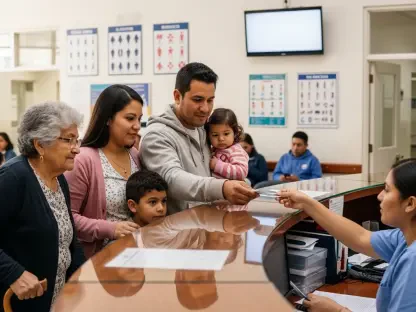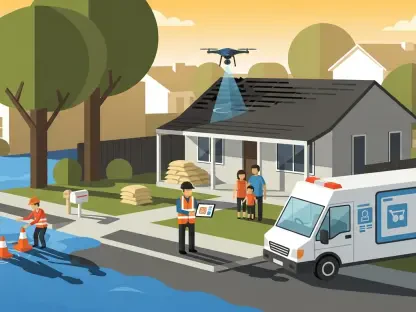In the rapidly evolving landscape of insurance technology, the partnership between Applied Systems and Certificial stands out as a pivotal development. At the forefront of this integration is Simon Glairy, an authority in Insurtech, known for his expertise in risk management and AI-driven risk assessment. As the industry shifts towards more digital methodologies, Simon shares his insights into how these innovations are redefining traditional processes within insurance agencies.
Can you explain the key features of the new integration between Applied Systems and Certificial?
This integration essentially creates a seamless connection between Applied Systems’ agencies and Certificial’s compliance network through a unified platform. By integrating with Certificial’s Smart COI Network™, agencies can now manage COI requests effectively, eliminating the redundancies of manual transmissions and streamlining coverage confirmations. This enhances the overall efficiency by allowing direct interaction within the Applied Epic system.
How does the integration between Applied Systems and Certificial specifically benefit insurance agencies and brokers?
The primary benefit is operational efficiency. Agencies and brokers can now handle COI requests without the hassle of traditional manual processes, which often involve repetitive data entry and communication delays. This integration provides an automated, centralized process that minimizes administrative tasks and allows brokers to focus more on client needs and strategic activities.
What are the main challenges in the certificate issuance process that this integration aims to address?
The certificate issuance process has historically been bogged down by inefficiencies like time-consuming manual uploads, verification delays, and frequent communication back-and-forth between parties. This integration addresses these issues by automating workflows, thereby reducing errors and expediting the entire issuance process.
How will the integration improve operational efficiency for Applied customers?
By centralizing workflows and automating the management of certificates, Applied customers will experience significant improvements in how tasks are executed. The system eliminates redundant processes, reduces manual errors, and enhances the speed at which insurance verifications are completed. This efficiency allows agencies to deploy their resources more strategically and focus on growth opportunities.
Could you elaborate on how this integration will enhance the service delivery for insurance agencies?
The integration enriches service delivery by providing real-time data and streamlined communication channels. It helps agencies deliver faster certificate turnarounds and more accurate insurance confirmations, ultimately enhancing the client experience and fostering stronger client relationships.
What role does Certificial’s Smart COI Network™ play in this integration?
Certificial’s Smart COI Network™ serves as the backbone for this integration, offering a robust platform for real-time insurance verification and compliance tracking. It allows users to gain better visibility into insurance statuses across vendors, facilitating quicker and more reliable assurance of policy effectiveness and compliance.
How does the integration provide increased visibility into vendors’ insurance statuses?
By connecting directly within the system, users receive instant updates on vendors’ insurance statuses. This real-time insight ensures that policies are active and accurately reflected, allowing for immediate reassurance of coverage and compliance from vendors.
Can you discuss the centralized and automated workflows that Applied’s users will experience?
Applied’s users will benefit from a streamlined interface where COI requests and confirmations are processed automatically. This centralization means that all relevant data and communications are consolidated, reducing the chance of oversight and improving turnaround times from request to issuance.
How does the integration help reduce risk and build trust faster among parties involved?
With real-time verification and an automated audit trail, risk is minimized as each party can promptly validate that appropriate coverage levels are in place. This transparency builds trust, as all parties can rely on the accuracy of the certificate status and quickly address any discrepancies.
What advantages does the integration offer for vendor credibility?
Integration enhances vendor credibility by confirming the validity and activeness of their insurance policies in real time. This assurance gives agencies the confidence to engage with vendors, knowing there are rigorous verification processes ensuring compliance and coverage integrity.
How does this integration redefine commercial insurance verification?
It sets a new benchmark for insurance verification by introducing a systematic, digital approach that minimizes human error, accelerates processing times, and boosts reliability. This digital transformation allows for a more dynamic and responsive verification system compared to traditional methods.
How does verifying vendor legitimacy in real-time benefit agencies and brokers?
Real-time verification mitigates the risk associated with outdated or false information by ensuring that any partnerships are based on accurate and up-to-date insurance data. This reliability enables agencies to make informed decisions quickly and engage vendors who demonstrate thorough compliance.
How does knowing a vendor’s policies are active and validated make them more attractive for business?
When a vendor’s insurance policies are verified as active and compliant, they become a lower-risk option for agencies, which often translates into preferred partner status. This active validation provides a competitive edge, making them more appealing for future business engagements.
What are the long-term impacts you foresee from this collaboration between Applied Systems and Certificial?
I foresee a fundamental shift in how agencies manage risk and compliance. As this digital transformation becomes the norm, we can expect a broader industry understanding of technology-driven efficiencies, leading to widespread adoption of similar integrations across various sectors. This collaboration sets a model for future partnerships and the continuous evolution of the insurance landscape.









